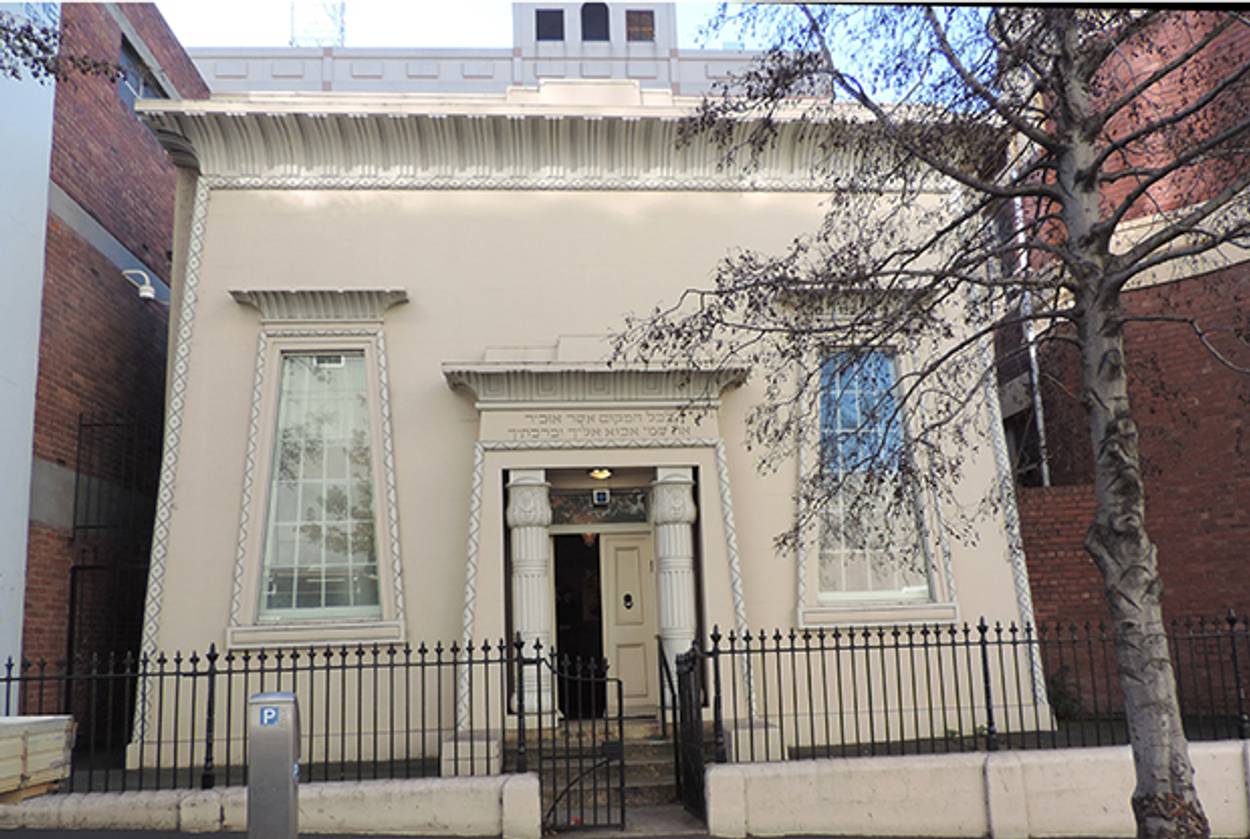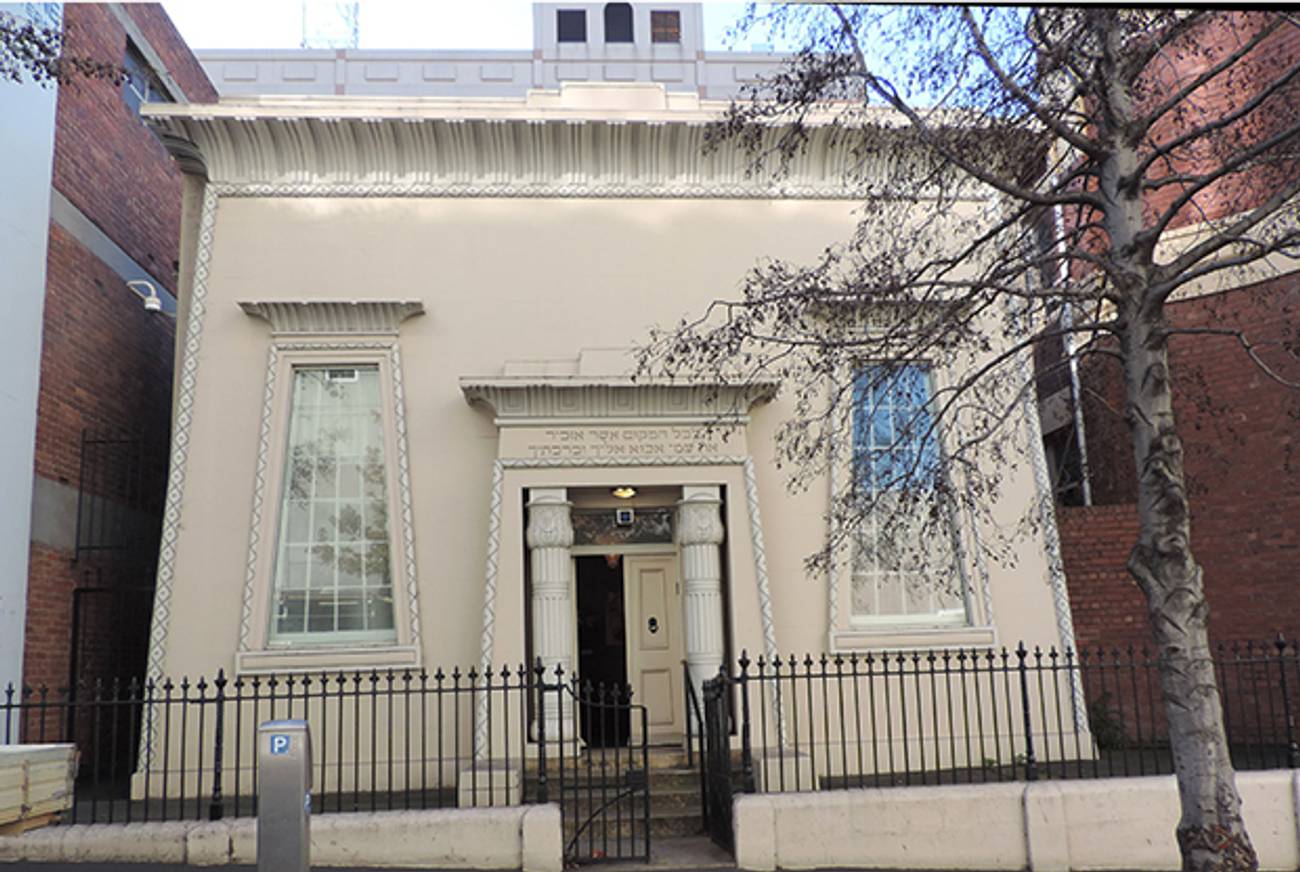The Convict Synagogue at the End of the World
Australia’s oldest temple was built by Jewish penal colony prisoners in 1845




As Jews around the world gathered earlier this fall to observe the High Holidays, few houses of worship rivaled the exotic history of the Hobart Synagogue in Tasmania, the remote island state off Australia’s southern coast. Here, no tickets were required for seats. Just 25 people attended lay-led Rosh Hashanah and Yom Kippur services in a sanctuary that seats 150. This faithful—if disputatious—remnant clings tenaciously to Judaism at the farthest fringes of the diaspora.
“There’s a determination among a number of us, a dozen or so only, to make sure that there is a continuing congregational life,” Tony O’Brien, on of the synagogue’s lay leaders, told me last summer. One congregational history, he noted, was titled Survival Against All Odds. “What animates us is a determination that Judaism will survive ‘against all odds’ as a living community in this island at the end of the earth, as some have called it.”
The oldest surviving synagogue in Australia was built by Jews who were former convicts in the bleak, infamous penal colony. There was special seating—numbered benches—in the sanctuary for those co-religionists who were still in bondage, some in chains. Being excused from work on Saturdays and given a home-cooked meal helped encourage piety and filled the pews in the 19th century.
Transported convicts Judah Solomon and his brother Joseph arrived in Tasmania from England in 1820. Like many of their fellow prisoners, the Solomon brothers were larger-than-life characters. According to congregational histories, they earned their one-way tickets to the Southern Hemisphere after being convicted of hiring miscreants to steal goods that had already been stolen. Ever the entrepreneurs, the Solomon brothers convinced members of their Jewish community back home in Sheerness, England, to invest in a more savory endeavor: a general store in Hobart, which had the support of British colonial authorities, and which they would operate themselves. The store prospered, leading to other enterprises in Hobart and elsewhere on the island. Judah was pardoned, acquired a mistress, and built a mansion.
Alas, Judah’s unexpected success resulted in a visit from his wife—the mother of his ten children—who arrived unannounced from Britain and, before long, filed for divorce and demanded the Solomon house. The domestic dispute was partially alleviated when Judah donated some of the gardens adjoining his home to the Jewish community, which by 1842 numbered nearly 260 members. While services were initially held in Judah’s mansion, known as Temple House, funds were raised locally to build an Egyptian Revival structure next door. The primary donors were Judah and Joseph, who contributed “handsomely,” according to marble wall plaques.
A member of the congregation who did not contribute was the legendary London criminal Isaac “Ikey” Solomon, on whom Charles Dickens reportedly modeled the fence Fagin in Oliver Twist. Ikey—no relation to Judah—was also transported to Hobart, where he also became a successful merchant. However, by the time the synagogue was built, Ikey had fallen on hard times, similarly enduring an acrimonious divorce, and thus his name does not appear on the contributors’ plaque.
While Hobart’s Jewish community has steadily dwindled over the centuries, the congregation was several times replenished, just at the point of extinction, by providing a safe harbor—if only a temporary one—for small numbers of Jews escaping far flung persecution and upheavals. There were small surges of European Jews after the Russian pogroms of the 1880s, and again in the 1930s, when the Holocaust approached. In the 1960s, others fled the anti-Apartheid turmoil in South Africa, and then Soviet persecution in the 1970s.
Notwithstanding, by the turn of the 20th century, a census found just 70 Jews in the congregation, and 163 in all of Tasmania. Today the number of Jews in the state is estimated at 150.
On my visit last summer, just a handful of congregants gathered in two cedar pews, clustered around a small space heater on a chilly (Southern Hemisphere) Saturday morning as sunlight streamed into the sanctuary. The Sabbath service had an air of melancholy, the worshipers chanting in tentative, sometimes quavering voices, the same Hebrew prayers heard when the synagogue was dedicated more than a century and a half earlier.
But despite the small size of Hobart’s Jewish community, wherever the children of Israel find themselves, it seems there’s always room for division. Until the 1980s, Hobart was a traditional, Modern Orthodox congregation. Around that time Chabad of Australia, part of the Brooklyn-based Hasidic movement, announced plans to come to invigorate the moribund community. In response, older members of the congregations organized themselves into a Progressive (Reform) group. At one point the dispute became so acrimonious that the Reform group locked the Chabad group out of the synagogue, and photographs of the worshippers praying on the sidewalk appeared in the local press. This led to a reconciliation, and the current Saturday morning arrangement: Each group alternates use of the sanctuary for about 90 minutes, with neither service drawing the required minyan.
No matter. Strife is nothing new to the Jews of Hobart. One 19th century dispute made its way to the chief rabbi of the British Empire in London, who ruled that male convict worshipers could be counted for the minyan, but were ineligible for honors like being called to the Torah. For the High Holidays this year, the Progressive group led services in the Hobart synagogue, while the Chabad congregation worshipped in the slightly younger synagogue in the northern Tasmanian city of Launceston, padlocked most of the year and under the care of the Australian National Trust.
Daniel Albert, head of the Hobart congregation, which has no paid staff, takes a philosophical view of the synagogue’s future. “The congregation has been successfully running for 169 years,” he says. “I expect that it will do so for the next 169 years.”
Mark I. Pinsky is longtime religion writer and the author of A Jew Among the Evangelicals: A Guide for the Perplexed.
Mark I. Pinsky is author of The Gospel According to Disney: Faith, Trust and Pixie Dust.